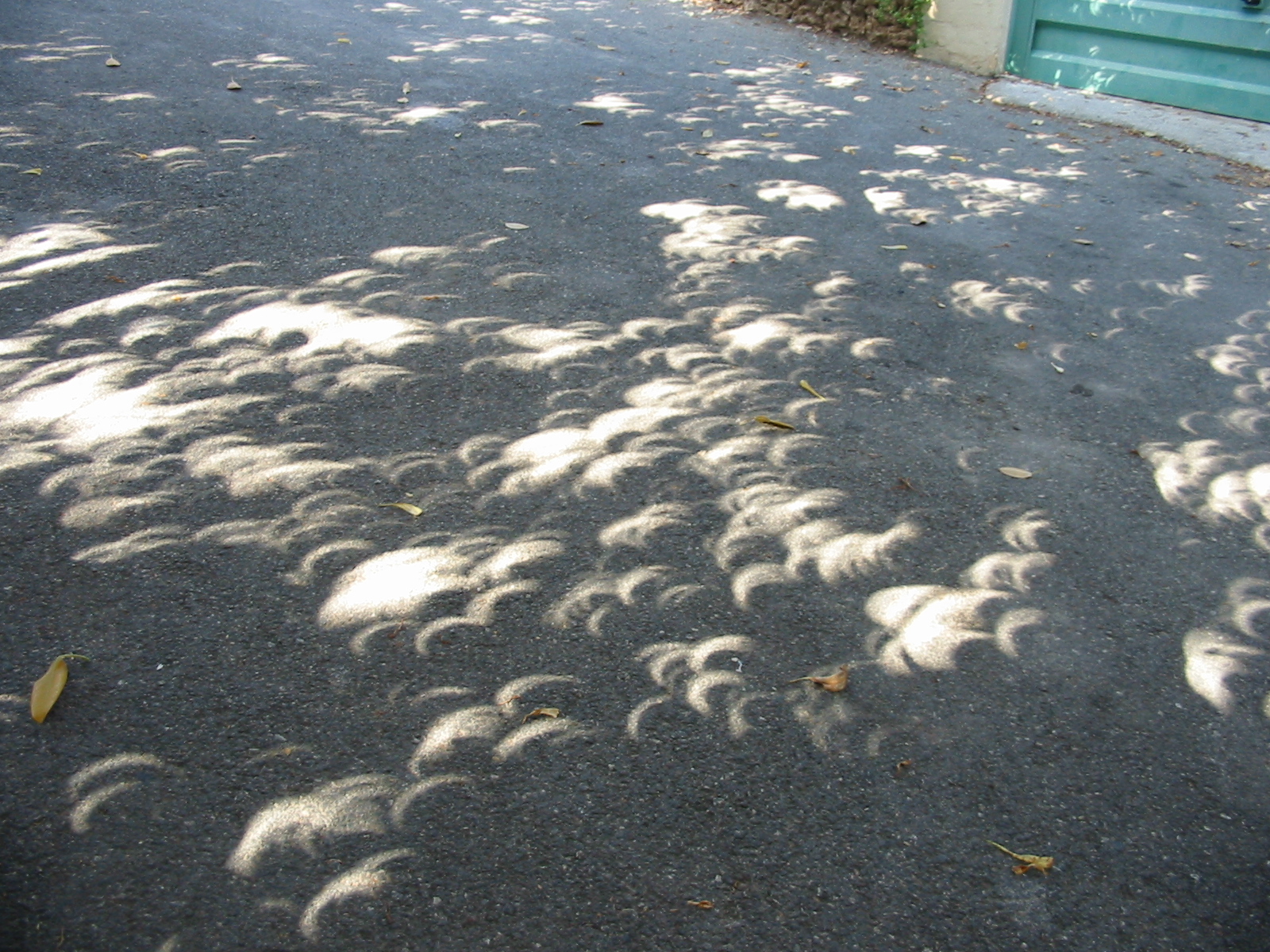- Home Test 625
- Home
- Visit
- Exhibits
- Programs & Events
- Membership
- Support
- Give the Gift of Play
- About
- Checkout
- Cart
- Utility
- Birthday Party Cancellation Form
- Phone Call
- Request for a Facility Rental Agreement
- Privacy Policy
- American Girl Benefit Sale
- Party Catering Form
- Event Date Request Form
- Camp Food Orders
- Flourish!
- IA24 Evening Event RSVP
- Development Events RSVP
- Development Tour
- Folder Request Form
- Development Team Test Page
- Logout
- Birthday Parties
Safely View the Eclipse with Your Kids

2005 solar eclipse through the leaves of a tree in Malta, by Ellywa, via Wikimedia commons
The upcoming eclipse of the sun, which will be visible over Madison on Monday, August 21 from 11:50 a.m. to 2:37 p.m., is creating nationwide excitement. This is the first such eclipse visible over much of the United States since 1991 and the next won’t be until 2024. Preparing for and watching the eclipse is a great way to encourage kids to become interested in and appreciate science.
Yet, even as we want to encourage our children’s participation in this exciting event, parents and caregivers should take measures to keep children safe. NASA cautions that “looking directly at the sun is unsafe except during the brief total phase of a solar eclipse (“totality”), when the moon entirely blocks the sun’s bright face.” In Wisconsin, we will only experience a partial eclipse, but even those traveling to be under the path of the total eclipse should take care, as the damage can occur right up to the moment of totality and begin again as soon as the sun emerges from behind the moon.
Looking directly at the sun, even during the reduced light of an eclipse, is simply not safe. Direct viewing (or viewing through a lens such as a camera or binoculars) may cause photokeratitis or solar retinopathy, both of which can lead to permanent eye damage and blindness. Parents may assume their children will shy away from a painfully bright light, however this could be a dangerous mistake. While it is happening, eye damage caused by the sun can be painless and symptoms may not start until hours later, so parents and caregivers need to be especially careful to not let their kids sneak peeks without protection.
The only way to look directly at the sun is through special-purpose solar filters. Even the darkest of sunglasses lets in thousands of times too much light! Many people have attempted to get special ‘eclipse glasses’ with built in solar filters; however, unscrupulous manufactures and vendors have made this process particularly challenging in recent weeks. Some glasses marketed for eclipse viewing are dangerously unsafe, and there have been reports of counterfeit knockoffs spoofing reputable brands.
You can learn more about how to tell if glasses you’ve bought are unsafe on the
American Astronomical Society’s website. Many consumers and institutions, including the museum, have recently found out that previously ordered glasses will not be available because of these supply issues. We ordered several hundred glasses weeks ago and recently found out that our order will not be able to be filled.
Fortunately there are many other completely safe options that will let you and your family participate in the magic of the eclipse. At the museum, during our Eclipse Viewing Party, we will hand out NASA pinhole postcard projectors. These cast an image of the sun, a little like a movie projector, and you’ll get to watch the moon’s shadow gradually move across the circle of light. We also have a tactile map of the eclipse for use by people who are visually impaired, so you won’t have to be able to see to join in. Additionally, in our Log Cabin viewing zone, we will explore historical eclipse lore and superstition.
If you can’t join us at the museum, you can make your own safe eclipse-viewing tools at home. Emily Lakdawalla of the Planetary Society has fantastic instructions, including the video below, on how to make simple or artistically elaborate pinhole projectors up on her blog. NASA posted a great video on how to make a safe sun viewer with homemade materials. And the Oregonian has posted useful videos on the options for gear, purchased or homemade, for safe eclipse viewing.
[youtube https://www.youtube.com/watch?v=NiT_KHRlSHQ]
The museum’s Eclipse Viewing Party will be on the rooftop on Monday, August 21 from 12:30-2 p.m. — the eclipse will be ongoing the whole time. In addition to the pinhole cards and tactile map, we will have a couple of NASA–issued eclipse viewing glasses and will be sharing those so you can still get a short, direct peek. For more information visit our Eclipse Viewing Party webpage.
The eclipse is a great time to teach kids about the wonders of the natural world around them, and get them interested in science – safely!
